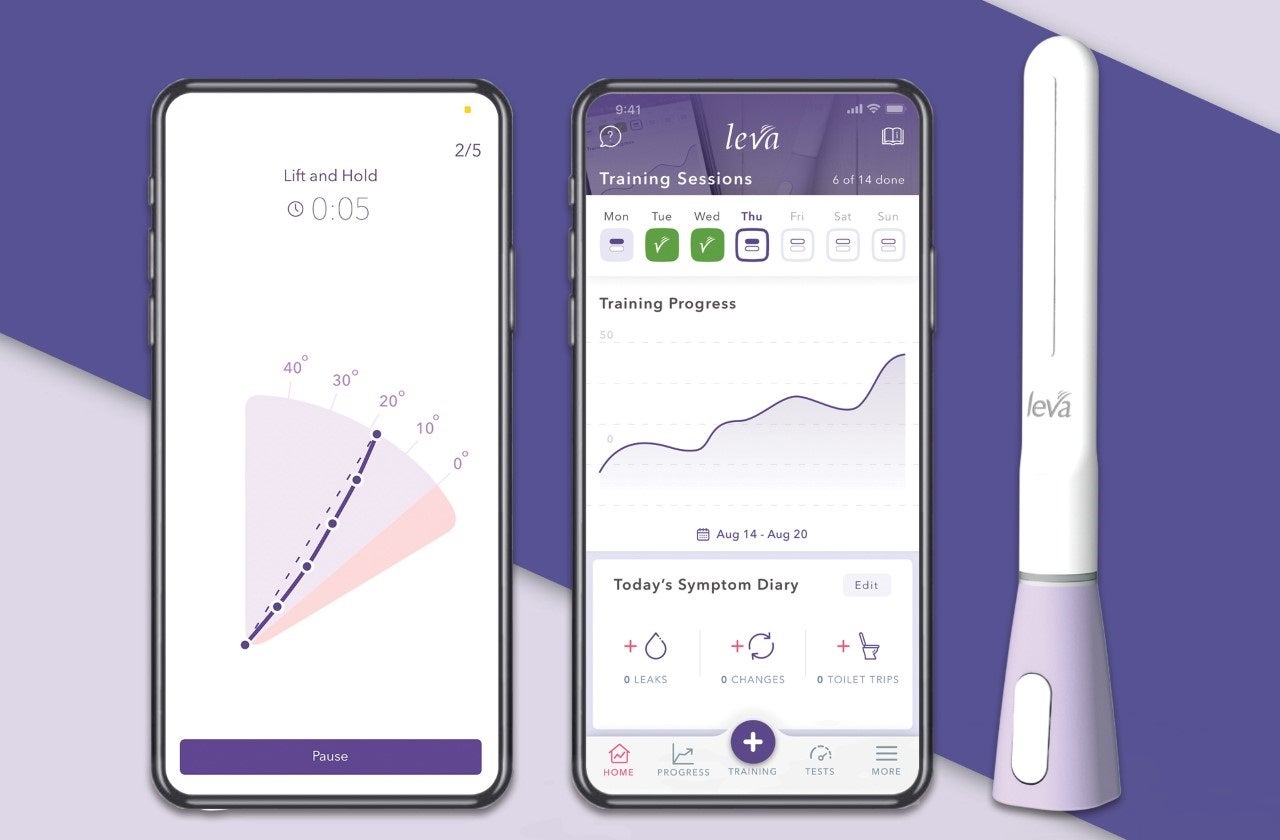
Urinary incontinence is a common problem that affects millions of women and people with vaginas. While it can occur at any age, it is more common in older people and those who have given birth. Urinary incontinence can present in numerous different ways, including as stress incontinence – urine leaking when the bladder is under pressure – or urge incontinence – when urine leaks during or shortly after a sudden, intense urge to urinate.
Many people with vaginas who suffer from urinary incontinence will be instructed by their doctor to perform Kegel exercises. Named after Arnold Kegel, a US gynaecologist who first published a description of the technique in 1948, Kegels involve repeatedly relaxing and contracting the pelvic floor muscles to strengthen them. These exercises can help many people to improve muscle control and urinary incontinence, but it can take several months for them to have an effect. Many people also do them incorrectly.
Renovia, a digital therapeutics company that specialises in female pelvic floor disorders, has developed a therapeutic device designed to help people strengthen their pelvic floor muscles to treat incontinence. The product, leva, consists of a vaginal probe and a connected app, which helps the user to visualise how they’re training their pelvic floor in real-time.
Renovia CEO Eileen Maus says: “What the patient does is insert the probe vaginally, and the connected app coaches them through the process of doing pelvic floor muscle therapy. It coaches them to relax and rest and take a deep breath and to then contract their vagina and hold for fifteen seconds, which they can see visualised on the device. They do that five times, twice a day. So, for two and a half minutes twice a day, you can get your pelvic floor health back.”
How does the leva device help with incontinence?
The leva device assesses the Kegels being carried out by the user through six internal accelerometers. The vagina is lifted by the surrounding muscles during pelvic floor exercises, and leva measures the incline of that lift using its six sensors. The change in incline can be seen on-screen in real-time by the user, allowing them to objectively assess their progress as they continually use the device.
How well do you really know your competitors?
Access the most comprehensive Company Profiles on the market, powered by GlobalData. Save hours of research. Gain competitive edge.

Thank you!
Your download email will arrive shortly
Not ready to buy yet? Download a free sample
We are confident about the unique quality of our Company Profiles. However, we want you to make the most beneficial decision for your business, so we offer a free sample that you can download by submitting the below form
By GlobalDataWhile it can take months to see progress from pelvic floor exercises, a clinical trial of the first-generation leva device saw 50% of women experience symptom improvement within a week. By week six of the trial, 87% of women reported no urinary leakage at all.
This study only included 23 women, but Renovia has recently completed a 350-participant strong trial, investigating how well the device holds up compared to a standard pelvic floor exercise routine. While the final study has yet to be published, Maus says it has yielded “fabulous results.”
“I think the beauty of leva is that it makes first-line treatment accessible to women,” says Maus. “Gynaecology societies recommend that women do pelvic floor muscle training as the first line against urinary incontinence, but the problem with Kegels is that you can’t visualise that part of your anatomy like you can when you’re doing a bicep curl. Or women can go out to pelvic floor therapy, but that’s a time commitment and it’s invasive. What leva has been designed to do is take the best of pelvic floor muscle therapy and let women do it from the comfort of their home.”
Millions of US women suffer from urinary incontinence
Renovia closed a $17m Series C funding round in April to support its future commercialisation. Backers included previous investors Perceptive Life Sciences, Longwood Fund, Ascension Ventures and OSF Ventures, as well as new investor Parian Global Management.
The company is now reaching out to OB-GYNs across the US to introduce them to the device and allow them to start prescribing it to their patients. Unlike some pelvic floor training devices available for direct purchase, Renovia intends for patients to be monitored by their doctor as they start using the leva device.
The money will also be used for additional clinical development of the device for the treatment of urinary incontinence and other pelvic floor disorders.
Maus says: “About 20 million women in the US suffer from some type of urinary incontinence, and people are still told that this is a normal part of ageing. While it’s really common and so many women have it, having to just accept that this is your fate and maybe you’re wearing diapers, to just suck it up and deal with it – I just don’t think that’s appropriate.”





